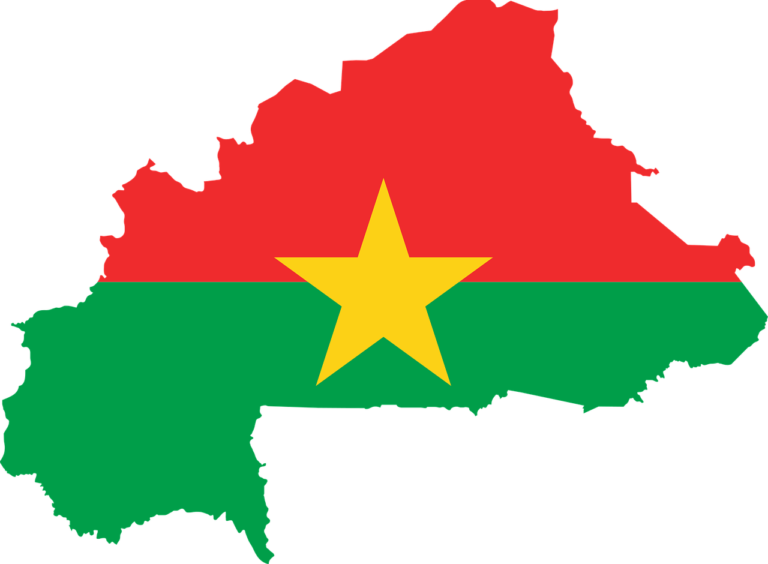Hip hop, national and Pan African identity in Burkina Faso

The dawn of the movement
As I indicated in the previous entry on music and dance in Burkina Faso, hip hop and rap music found their way into that country around the 1980s and took a special twist when artists from different genres, backgrounds and skills created a special métissage that combined hip hop, choreography and acting in movies. This piece focuses on the correlation between the revolutionary pan Africanist wind that blew over the country during the 1983-1987 revolution spearheaded by Thomas Sankar. I also look at the social dimension of this artistic movement and related values like Africanity, the African personality and others.
Influence of Sankara’s revolution and the Black diaspora
The central place of hip hop in Burkina and in Ouagadougou, in particular, should not be underrated. Proof of that sovereignty is the international Waga Hip-Hop Festival that has been in existence since the year 2000. Hip hop was initially anchored in the notions of the subaltern and identity and also transnational commonalities. It is interesting to contemplate what the concepts of Blackness and national culture represent today, in Burkina. Rap and hip-hop stress Black consciousness and the knowledge of, and pride in black history within many artistic circles in Ouagadougou. Rap has, therefore, been Africanized through the texts / messages it is based on, as well as the musical instruments it uses. Rap gained momentum in Burkina in the 1990s, when the young fans of the music started to wear baggy jeans, basketball shoes, caps turned backways, large tee-shirts and adopted new ways of greeting one another as well as of speaking.
The striking coincidence in all this was the rebuilding of national and Black pride in Burkina. Thomas Sankara’s revolution echoed many of those same values: the creation of a new culture, with the construction of national unity in mind, within a context strong symbolism: a new national anthem, new colours for the national flag; a re-baptism and renaming of the country that dropped the colonial or neocolonial name Upper Volta; and the transition of the role of the artist to steadfastly convey national ideals. Sankara became an icon during and after his life; in the year 2000 and beyond, numerous rap artists mention him in their songs. The history of rap in Burkina, therefore, unveils the existence of close links between the effort to assert a national culture soaked in a pan Africanist spirit on one hand, and on the other hand an appropriation of the codes and ways of Black America as it was done by some hip-hop fans in Ouagadougou. The observer can see that in some of the activities of The French Cultural Center in Ouagadougou (Centre Culturel Français) that used to organize contests and shows in which the famous rap artist Smokey (Serge Bambara) could already be seen as a future star. One thing that galvanized the fans of rap at that time was race. African Americans and French Africans (mulattos) were considered to be Africans and the Burkinabè preferred listening to the songs of the French Africans and Caribbean artists. To the Burkinabè, Black diasporans had succeeded in imposing themselves on the artistic as well as socio-political and socio-cultural scene of the West. For Burkinabè rap artists, to hold the microphone and perform on stage was a sign of success and power; it meant that although they had not traveled to the Americas or Europe, they could sing as well as their diasporan counterparts, and at times, they could even sing better.
Some catalysts
When investigative journalist Norbert Zongo was assassinated in 1998 while he was writing on crimes, embezzlements and atrocities of the Compaoré regime, the latter became less popular and made some concessions. Some degree of freedom of speech was established and the first studio for recording hip-hop music was set up by Smokey. A new Art World was born and coexisted with rap. In that newly founded circle, one still finds rap singers, producers, managers, artists, journalists and sponsors.
Movies and cinematography contributed to the “moulding” of several Burkinabè rap artists. Smarty is one such and he clearly states that watching charismatic and influential Black personalities like Malcolm X, Ray Charles, and excellent African leaders like Lumumba ignited his love for rap. He concludes by saying that the same love of rap led him to do more research on culture and politics, a pursuit that helped him acquire some knowledge that does not always exist within the confines of a classroom. Malkom, a member of the rap band Faso Kombat, chose that name up because of his love for Malcolm X.
Rap brought to Burkina the realities of the lives of Blacks throughout the world, the history of their struggles and the knowledge of pan Africanism, if we understand pan Africanism to be the relationship between continental Africa and her diaspora.
Moussa Traoré is a Senior Lecturer at the Department of English of the University of Cape Coast, Ghana.






